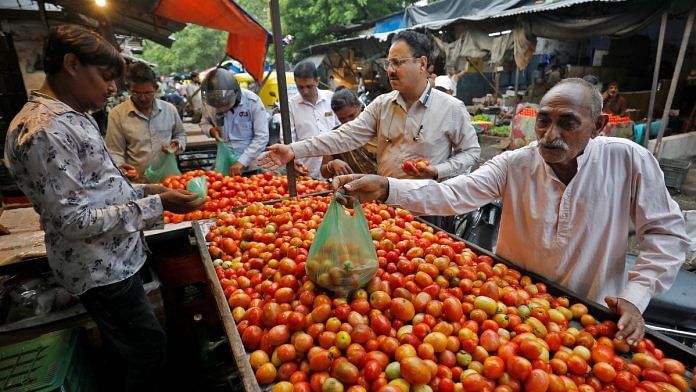Kolar: Vegetable prices in India are set to stay higher for longer, as erratic monsoon rains delayed planting and damaged ripening crops, farmers and traders said.
Vegetables prices, which have a 6% weighting in the overall consumer price index (CPI), hit a seven-month high in June, rising 12% month-on-month, official data shows.
Prices usually ease from August, when the harvest makes its way to the market, but this year, traders expect costs to remain high until October as supplies stay tight.
“The monsoon is disrupting the vegetable supply chain. This year, we are going to witness higher vegetable prices for a prolonged period,” said Anil Patil, a Mumbai-based trader.
Costlier staples such as onions, beans, carrots, ginger, chillies and tomatoes not only feed voter discontent ahead of state elections in the next few months: The higher prices are likely to stoke retail inflation, which is expected to hit a seven-month high in July, diminishing the potential for the Reserve Bank of India (RBI) to lower rates this year.
“Supply-side measures would be best suited to temper the rise in food prices. The RBI is expected to remain on pause till at least December 2023,” said Gaura Sen Gupta, India economist at IDFC FIRST Bank.
Tomato prices are particularly hot, surging more than 1,400% at the wholesale market to a record 140 rupees ($1.71) per kg in the past three months, prompting many households and restaurants to cut purchases.
Farmers in the third-biggest tomato-producing region in the southern state of Karnataka say poor rainfall, higher temperatures and a virus outbreak have hit the crop, which was planted on less land than a year ago because of a crash in prices.
“Supplies are just 30% of normal as yields,” said farmer Srinath Gowda, who manages 200 acres of farmland.
The monsoon has also affected other crops. Key vegetable-producing northern and western states received as much as 90% above-average rainfall, and some eastern and southern states got up to 47% less rain, according to the weather department.
Some states received no rain for weeks, and then were flooded with a month’s worth of rain in a week, an official with the meteorological department said.
The supply disruptions, and the resulting higher food prices, are expected to send retail inflation higher to 6.5% in July, its highest level this year and above the Reserve Bank of India’s 2% to 6% target range, HSBC economists said in a recent note. Economists now expect the RBI to keep interest rates high into mid-2024.
Supplies should start picking up in the next few weeks from crops planted in June, but that will not be sufficient to cool prices, said Rajendra Suryawanshi, a vegetable trader in the western city of Pune.
“Meaningful correction in prices would begin from September, and in October, we could see prices falling to a normal level,” Suryawanshi said.
($1 = 81.98 rupees)
(Reporting by Brijesh Patel in Kolar and Rajendra Jadhav in Mumbai; Additional reporting by Siddhi Nayak; editing by Mayank Bhardwaj and Miral Fahmy)
Disclaimer: This report is auto generated from the Reuters news service. ThePrint holds no responsibilty for its content.
Also read: An optimistic IMF has upped its projection for global growth, but don’t celebrate just yet…



